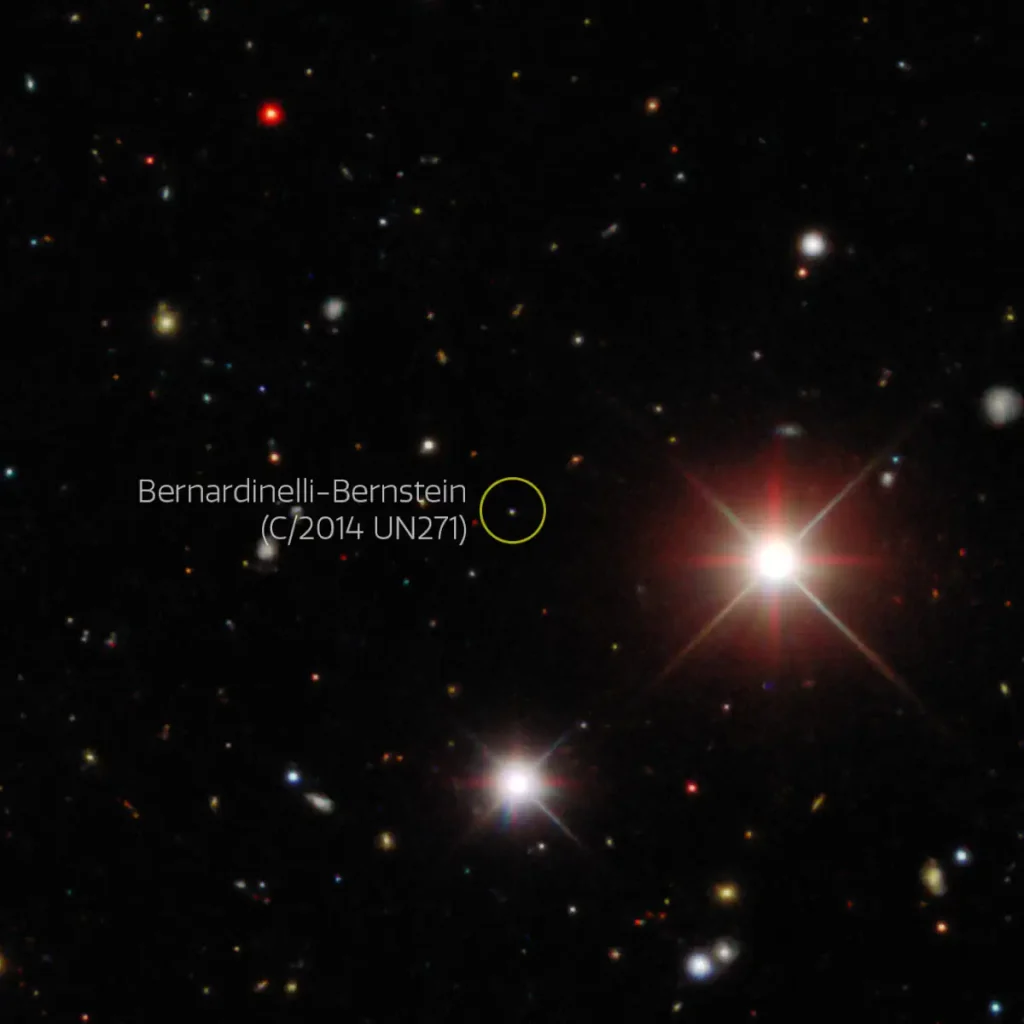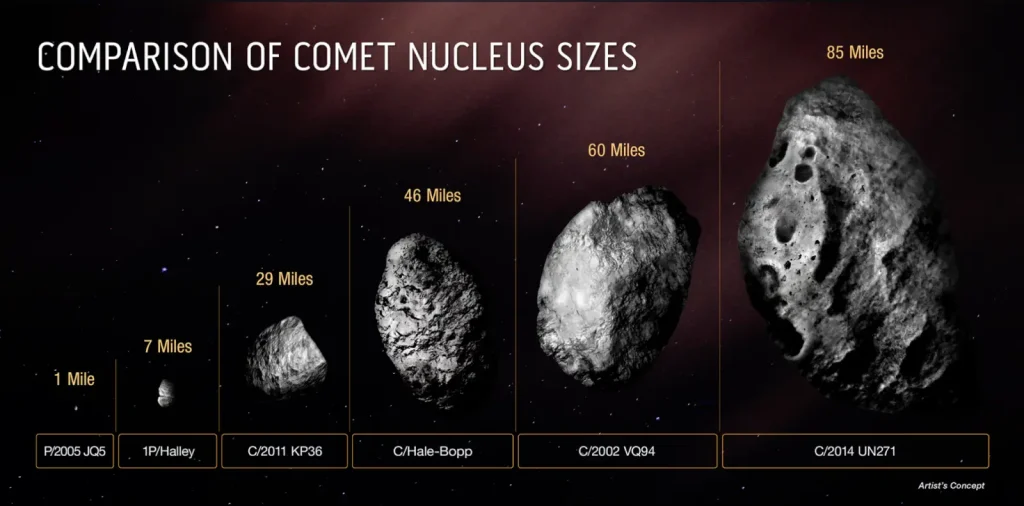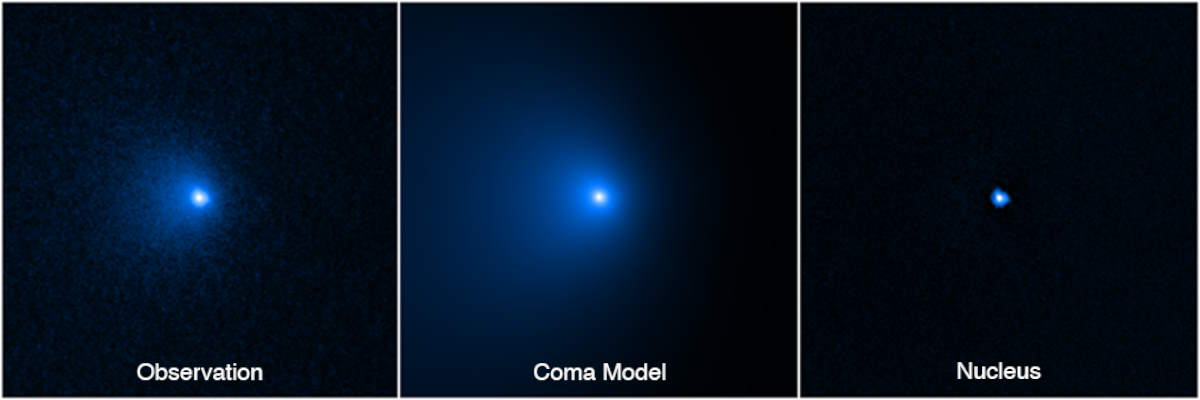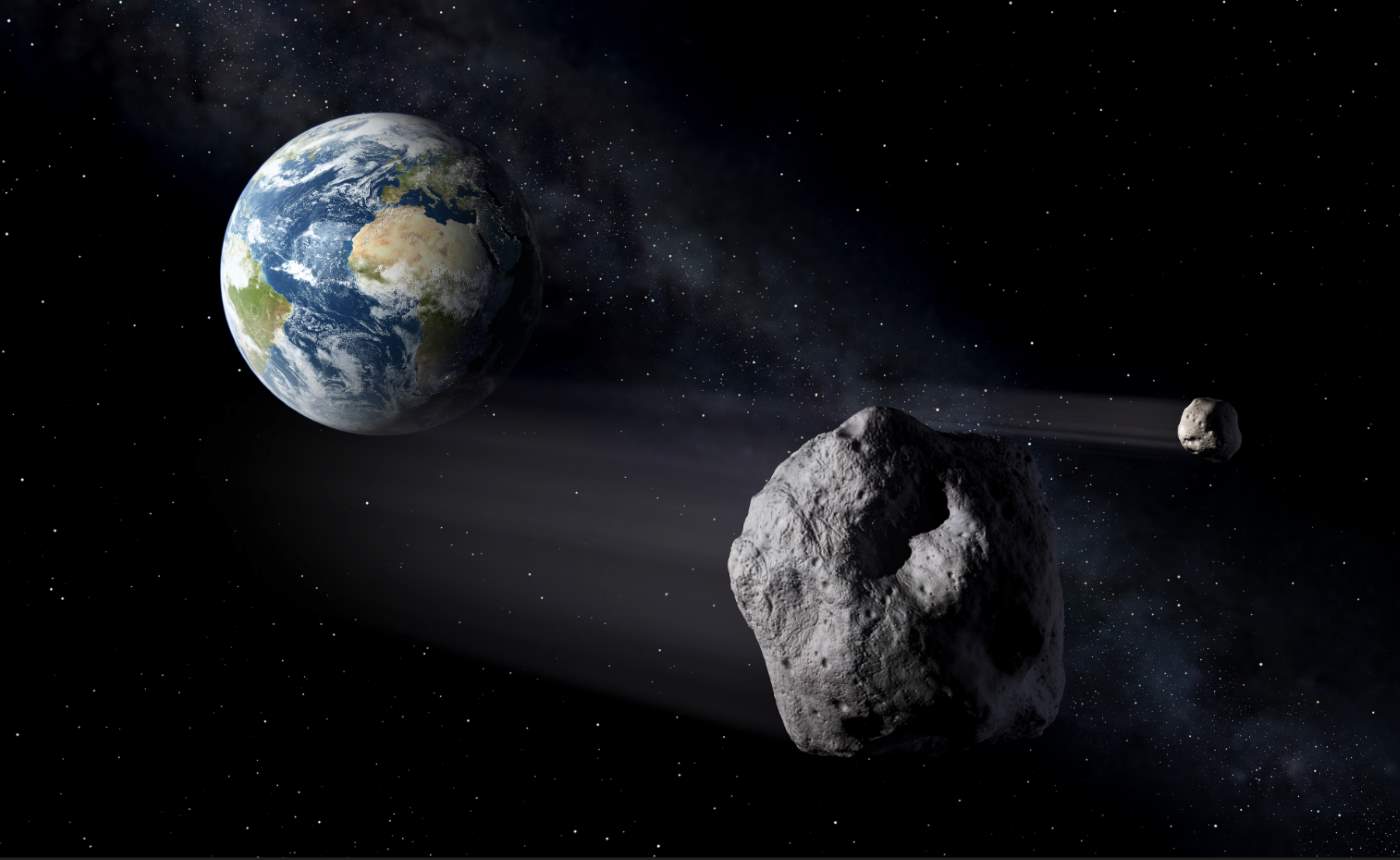On October 20, 2014, astronomers Pedro Bernardinelli and Gary Bernstein discovered the largest comet ever known using archival images from the Dark Energy Survey [see notes 1]. Comet Bernardinelli-Bernstein’s estimated diameter is approximately 85 miles (136.7 km) across, making it larger than the state of Rhode Island. According to NASA, its nucleus is about 50 times larger than that found at the heart of most known comets. [Source] Its mass is estimated to be a staggering 500 trillion tons – about 100,000 times greater than the mass of a typical comet found much closer to the Sun.
October 20 story of what happened this day in Science, Technology, Astronomy, and Space Exploration history.
Comet Bernardinelli-Bernstein: the largest comet ever known
Comet C/2014 UN271 (Bernardinelli–Bernstein) was first imaged on October 20, 2014, during the Dark Energy Survey (DES), although its significance as a comet was not immediately recognized. Using the 4-meter Victor M. Blanco Telescope in Chile, the DES was focused on investigating dark energy and cosmic structure. The survey’s wide-field camera captured vast amounts of celestial data, including images of this object.
Its discovery as a comet came years later when astronomers Pedro Bernardinelli and Gary Bernstein were analyzing the DES data specifically for trans-Neptunian objects. They noticed an object with a slow movement and faint, diffuse appearance, different from typical asteroids. This indicated its cometary nature, leading to its identification as C/2014 UN271. The comet, with an estimated nucleus size of approximately 85 miles (136.7 km), stands out as the largest comet ever discovered, an extraordinary find made possible by revisiting and analyzing previously captured astronomical data.
The comet’s discovery was announced by the Minor Planet Center on June 19, 2021. The Minor Planet Center (MPC) is an international organization responsible for collecting and cataloging observational data for minor planets, comets, and outer irregular natural satellites. It operates under the auspices of the International Astronomical Union (IAU).

Before Comet C/2014 UN271 was identified, the record for the largest comet nucleus was held by C/2002 VQ94, estimated to be about 60 miles (97 km) in diameter. This comet was discovered in 2002 by the Lincoln Near-Earth Asteroid Research (LINEAR) project, a collaborative venture involving the United States Air Force, NASA, and MIT’s Lincoln Laboratory. The LINEAR project’s primary goal is to detect and track near-Earth asteroids, contributing significantly to our understanding of these celestial bodies and enhancing planetary defense efforts.
Not visible to the naked eye
Despite being the largest comet ever discovered, and despite having a relatively high brightness, Bernardinelli-Bernstein is not visible to the naked eye. When first imaged by the DES, its distance was 29 AU (4.3 billion km; 2.7 billion miles) from the Sun, which is nearly the average distance to Neptune. [An Astronomical Unit (AU) is a standard unit of measurement in astronomy, primarily used to express distances within our solar system. It is defined as the average distance between the Earth and the Sun. This average distance is approximately 93 million miles or 150 million kilometers.]
According to NASA, Comet Bernardinelli-Bernstein will never get closer than 1 billion miles (1.6 billion km) away from the Sun, which is slightly farther than the distance of the planet Saturn. And that won’t be until the year 2031.
Even when it’s at perihelion (the closest to the Sun), the comet is not expected to get brighter than Pluto (mag 13-16). It is more likely to reach the brightness of Charon, Pluto’s moon (mag 16.8). Bernardinelli-Bernstein will not enter the inner Solar System where comets become notably more active and more visible (when comets get close to the sun, they heat up and we can see their glow and long tails). Even if it reaches the magnitude of Pluto, it will require about a 200 mm telescope to be visually seen.
According to scientists, its nucleus is darker than coal.

Orbital characteristics of Comet Bernardinelli-Bernstein
- Aphelion [closest to the Sun]: ~39,600 AU (inbound), ~55,000 AU (outbound)
- Perihelion [farthest to the Sun]: 10.9502 AU (1.64 billion km)[c]
- Semi-major axis: ~19,800 AU (inbound), ~27,500 AU (outbound)
- Eccentricity (how much an orbit deviates from being a perfect circle): 0.99945 (inbound), 0.99960 (outbound)
- Orbital period: ~2.79 million years (inbound), ~4.56 million years (outbound)
- Inclination (the tilt of an object’s orbital plane relative to a reference plane, usually the plane of the equator of the primary body it orbits or the ecliptic plane in the Solar System): 95.466° (inbound), 95.460° (outbound)
- Next perihelion: January 23, 2031

Notes
- The Dark Energy Survey (DES) is a significant astronomical project aimed at understanding the mysterious force known as dark energy, which is believed to accelerate the universe’s expansion. Utilizing a 570-megapixel camera mounted on the Blanco Telescope in Chile, DES has surveyed the sky since 2013, capturing detailed images of galaxies to study cosmic structures and their evolution over billions of years.
Sources
- “Hubble Confirms Largest Comet Nucleus Ever Seen” on the NASA Science website [April 12, 2022]
- C/2014 UN271 (Bernardinelli-Bernstein) on Wikipedia
- Moon Landings: All-Time List [1966-2025] - February 2, 2025
- What Is Max-Q and Why Is It Important During Rocket Launches? - January 16, 2025
- Top 10 Tallest Rockets Ever Launched [2025 Update] - January 16, 2025

